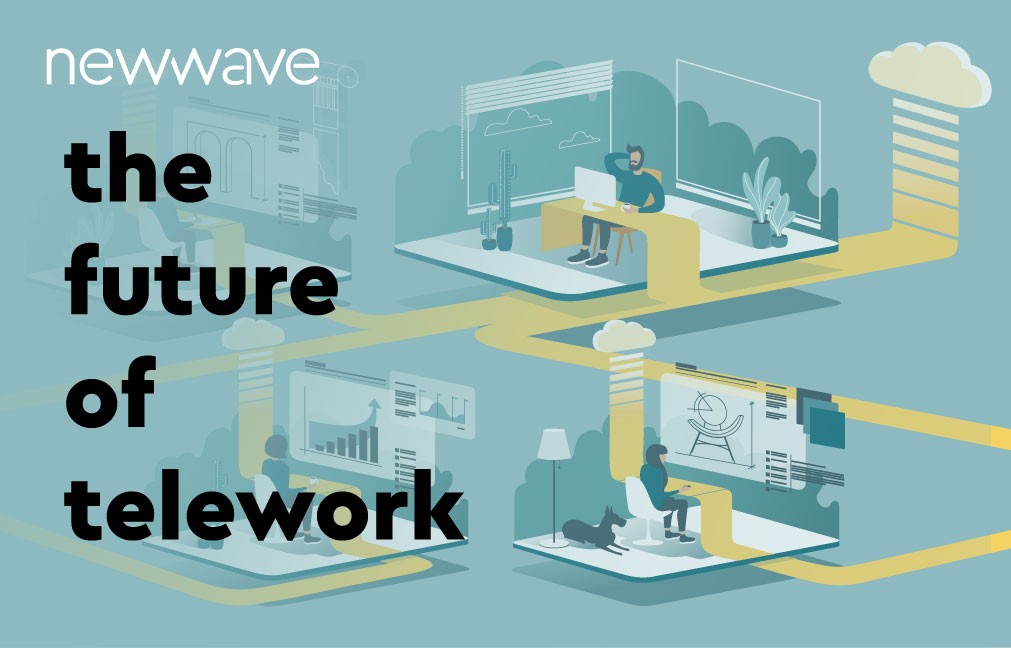We are in a time where long predicted changes in our lives are happening much faster than what would have been anticipated pre-pandemic.
Over the past five months, much of the U.S. workforce has moved from working in an office or cubicle, to teleworking from their homes. This grand social experiment has been the subject of numerous thought pieces and analyses by various think tanks and publications. The opinions range from, it’s the most wonderful change ever with great increases in productivity, to those who bemoan the loss of the workplace culture and the benefits of interacting with other human beings in person.
I have a somewhat different view. I believe that it’s too early to jump to conclusions, partly because of how unique the situation is and the uncertainty about the future, especially the near-term. I think the situation will continue to evolve and will be largely impacted by the length and continuing impact of the pandemic and the future of the economy. My thoughts are based on the following assumptions:
- The pandemic will continue to be a major disruption to formerly normal work patterns for at least the next 9-12 months, even if a vaccine begins to get deployed by the end of this year.
- Because of COVID-19, we are in an unprecedented state of disruption that not only impacts the workplace but all phases of life. As such, not only are people’s workplace routines interrupted but also every other part of life as well including those who typically interact with others in-person on a regular basis. So, any conclusions drawn from an analysis of people’s work behavior at this time also must take into account additional unique circumstances.
- People’s ability to adapt depends in a large part on their personal situation. Someone who lives in a small apartment with young children is going to have a much harder time teleworking than someone who has no children and lives in a large house. Adaption success is also somewhat dependent the type of job that people have. Some jobs are much easier to perform remotely especially with current technologies. People also vary in the strength and breadth of their work and social ties which can have a big effect on how well they cope.
- Many Americans have already been working remotely for years so the change for them is less stressful, but it is different. Washington Technology in partnership with IBM’s Business of Government recently did an excellent multi-part series that described the Federal workforce’s experiences with telework. Even before the pandemic, 19% of the Federal workforce were teleworking at least part-time. I have worked mostly remote for years, initially because my employer, IBM, wanted us to work that way. Team video interactions worked to an extent but did not build the same type of culture that I had when I worked in an office. We brought staff together with periodic in-person team meetings and set up engagements with local employees in restaurants and other public places. This helped to somewhat lessen the isolation factor. Unfortunately, with the pandemic those in-person options are very limited at best.
- In the future, technologies and workplace norms will continue evolve to provide better support for remote working. Experiences gained during the current pandemic will greatly help inform future planning. The incentives for companies to allow teleworking pre-pandemic, such as recruitment needs, relieving urban congestion, saving money on office space etc. will continue to be drivers.
So, how can companies, organizations, and individuals best adapt to today’s environment, and what happens afterward when conditions allow for a return to normal or close to normal? I think an important question all leaders need to ask themselves is: What is our workplace culture? Why do people come to work for us, stay with us, or move on to other companies? Does teleworking help, hinder, or make no difference? There are other impact areas to consider as well, including:
- Productivity NewWave and other companies are seeing a tendency towards more meetings and longer days. There were initial reports of increased productivity from various studies, but it is not clear whether that trend will last or how productivity was measured, especially for office jobs. One recent analysis showed that workdays are 10-20% longer than pre-pandemic. Of course, the longer work time also includes time not commuting and some ability to be more flexible with home-work tasks. Will productivity get better or worse as time goes on and people become more adjusted to working remotely, especially when life becomes more “normal”?
- Creativity What is the impact on creativity with less opportunity to meet in person? At IBM the lack of in-person meetings for new idea development became a major liability with remote working which is why the company moved marketing staff and other areas back into the office (in the pre-pandemic world). Other studies have also pointed to a loss in creativity as people have less ability to interact outside of calls, especially people that have weak or no existing ties with each other. Less spontaneity, difficulties in building new work relationships and challenges in fostering productive group think sessions all are results of increased telework.
- Communications Are there more miscommunications now and longer decision-making because of the new normal? Given that much of communication is non-verbal and in-person meetings offer more opportunity for side talk, conflicts and other points of disagreement could be exacerbated. Some decisions require a fair amount of engagement between multiple stakeholders. This is often more difficult to accomplish via videoconferencing calls.
- Employee Morale What is the impact on managers and staff in terms of morale and mental health? Especially if the pandemic continues into the winter months, which have negative impacts on many people’s mental state even without COVID-19? How are new employees adjusting now that there is less ability to get immersed into cultural norms? How does telework impact career development with less employee opportunity to be seen or interact with the company leadership? On a positive front-with people commuting less, are they getting more sleep and less stress related to dealing with traffic congestion, especially in large metropolitan areas like the D.C. region?
- Vendor-Customer Interactions Both vendors and Federal employees will continue to be concerned about the safety of offices and public gatherings for some time so in-person meetings may never return to the level that they were pre-pandemic. How has the new normal impacted vendor-customer communications with no or very few in-person meetings and a decrease in informal interactions, especially where are no strong previous ties. Business development teams that depend a lot on personal interactions with partners and clients have already had to modify their strategies.
- Diversity and Disparity Does teleworking create more of a divide between employees who have a home environment better suited to remote work and those that don’t? E.g. those with childcare and school issues, varying size and layout of houses, technology setup, an individual’s comfort with technology, access to broadband etc. These variables can have many potential impacts including career growth, ability to perform certain jobs well, and being able to move into different job roles. Harvard Business Review recently wrote an article entitled “Working from home while black” that described out multiple challenges black employees face when their personal lives and environment get woven into the work environment via telework.
We are in a time where long predicted changes in our lives are happening much faster than what would have been anticipated pre-pandemic. The coming years will see more uncertainty in workplaces driven by many factors, including how long the current pandemic conditions last, the shape of the post-recovery economy as well as the chaotic political environment.
While businesses need to focus on productivity, increasing revenue, and reducing unnecessary costs, the pandemic also offers an opportunity to take a new look at your workplace culture and how this moment can be used to create a better workplace atmosphere that blends the best of the virtual and in-person worlds. It also provides a new chance to look at your approaches for engaging new and existing customers. Re-thinking business strategies now, including telework’s role, is critical because how the post-pandemic economy evolves will drive the future of the country for at least the next 10-15 years or perhaps longer. Businesses that cannot adapt will soon be gone.


